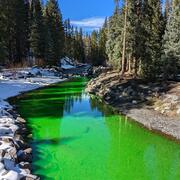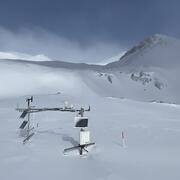No matter the season, we are out monitoring Colorado waters.
In winter...
No matter the season, we are out monitoring Colorado waters.
In spring...
No matter the season, we are out monitoring Colorado waters.
In summer...
No matter the season, we are out monitoring Colorado waters.
and in the fall.
Colorado Water Science Center
Welcome to the USGS Colorado Water Science Center! Please use these pages to explore the hydrologic data and scientific investigations we conduct on Colorado water resources.
NOTICE: USGS is improving the way that sample data are stored and served to the public.
Science Highlight

Next Generation Water Observing System: Upper Colorado River Basin
The Next Generation Water Observing System provides high-fidelity, real-time data on water quantity, quality, and use to support modern water prediction and decision-support systems that are necessary for informing water operations on a daily basis and decision-making during water emergencies.





